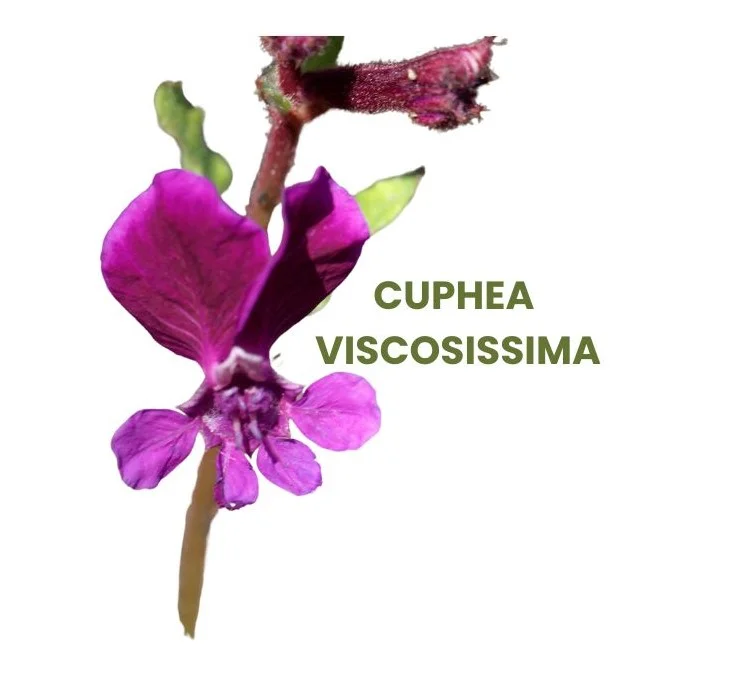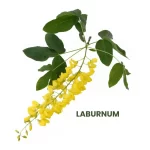Cuphea viscosissima, commonly known as flux-weed, is a medicinal herb used in homoeopathy.
It is primarily indicated for gastrointestinal disorders, including vomiting of undigested food, cholera infantum, and obstinate constipation.
This remedy is characterised by its ability to address symptoms such as acidity, frequent watery stools, tenesmus, high fever, restlessness, and sleeplessness.

Table of Contents
ToggleSOURCE INFORMATION
Scientific Classification
- Kingdom: Plantae
- Order: Myrtales
- Family: Lythraceae
- Genus: Cuphea
- Species: Cuphea viscosissima
Origin
- Cuphea viscosissima, commonly known as flux-weed, is native to North America.
- It is found growing in various habitats such as wet prairies, meadows, and marshes.
- The plant thrives in moist, low-lying areas and is commonly distributed throughout North American regions.
Historical Facts
- Indigenous tribes in North America historically used Cuphea viscosissima for its medicinal properties.
- The plant has been traditionally employed in treating gastrointestinal ailments such as vomiting, diarrhoea, and dysentery.
- Its historical use by indigenous peoples reflects its importance as a medicinal herb in traditional medicine practices.
DRUG PATHOGENESIS
- Cuphea viscosissima exerts its therapeutic effects primarily on the gastrointestinal tract, alleviating symptoms such as vomiting, diarrhoea, and tenesmus.
- It helps regulate acidity levels in the stomach and intestines, providing relief from conditions like cholera infantum.
- The remedy addresses high fever accompanied by restlessness and sleeplessness, indicating its influence on the overall vitality and nervous system.
KEY CHARACTERISTICS
- Effective remedy for vomiting of undigested food: Cuphea viscosissima is noted for its efficacy in addressing vomiting episodes where the food remains undigested.
- Indicated in cholera infantum with acidity and green, watery stools: It is particularly useful in cases of cholera infantum, characterised by high acidity, frequent green, watery stools, and gastrointestinal distress.
- Relieves tenesmus and associated pain: Cuphea viscosissima helps alleviate tenesmus, a distressing symptom characterised by a constant urge to defecate or urinate, often accompanied by pain and discomfort.
- Alleviates high fever, restlessness, and sleeplessness: This remedy is beneficial in reducing high fever and addressing restlessness and sleeplessness often associated with gastrointestinal disturbances.
- Useful in cases of obstinate constipation: Cuphea viscosissima is indicated in cases of severe constipation where bowel movements are infrequent and difficult to pass.
GASTROINTESTINAL SYMPTOMS
- Vomiting of undigested food.
- Frequent green, watery, acid stools.
- Tenesmus (persistent urge to defecate or urinate).
- Great pain associated with gastrointestinal distress.
- Obstinate constipation.
MODALITIES
- Aggravation: Symptoms worsen with acidity, frequent green stools, and tenesmus.
- Amelioration: Relief is observed with the resolution of gastrointestinal symptoms and fever.
RELATIONSHIP WITH OTHER DRUGS
- Aethusa and Coto-Para-coto Bark: Similar remedies indicated for gastrointestinal disorders, including chronic diarrhoea and dysentery.
- Typha latifolia: Another remedy for diarrhea and dysentery, particularly in cases of summer complaint in children.
DOSE
- Tincture: Cuphea viscosissima is typically administered in tincture form.
Frequently Asked Questions
What conditions is Cuphea viscosissima indicated for?
- Cuphea viscosissima is indicated for vomiting of undigested food, cholera infantum, obstinate constipation, and high fever accompanied by restlessness and sleeplessness.
What are the key characteristics of Cuphea viscosissima?
- Cuphea viscosissima is known for its efficacy in addressing gastrointestinal symptoms such as vomiting, diarrhoea, tenesmus, and acidity, as well as fever with restlessness and sleeplessness.
How is Cuphea viscosissima related to other remedies?
- Cuphea viscosissima shares similarities with Aethusa, Coto-Para-coto Bark, and Typha latifolia in treating gastrointestinal disorders and fever-related symptoms.
What is the recommended dose of Cuphea viscosissima?
- Cuphea viscosissima is typically administered in tincture form.
Meaning of Difficult Words
- Tenesmus: Painful, ineffective straining to empty the bowels.
- Catarrh: Inflammation of a mucous membrane, especially the respiratory tract, typically causing increased mucus production.
- Copious: Abundant in supply or quantity.
- Obstinate: Stubbornly refusing to change one’s opinion or chosen course of action, despite attempts to persuade one to do so.
- Tincture: A solution of a medicinal substance in an alcoholic solvent.













Leave a Reply